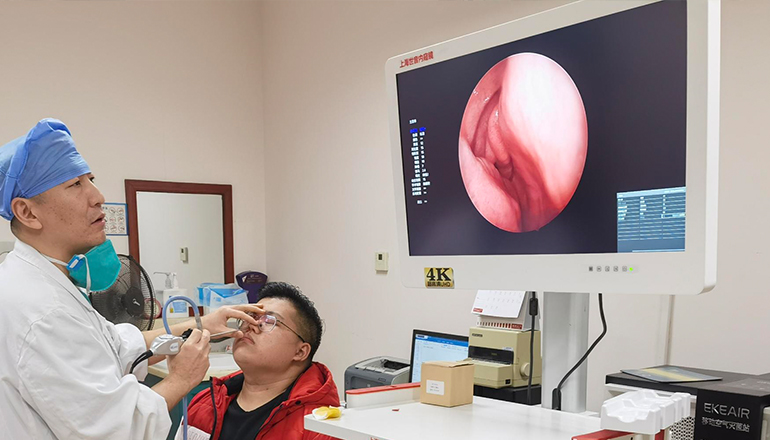- Shanghai, China
- [email protected]
- +86-21-58189111
Epistaxis, or nosebleed, is a common condition that can be treated effectively using a nasal endoscope. A nasal endoscope is a thin, flexible tube with a camera and light source attached to it, which allows the surgeon to visualize the inside of the nose and perform procedures. Hemostasis, or stopping bleeding, is an essential part of treating epistaxis under nasal endoscope. In this article, we will discuss the methods and precautions for hemostasis of epistaxis under nasal endoscope.
Methods:
Direct pressure: This is the most common method used for stopping nosebleeds. The surgeon applies direct pressure to the bleeding site using a cotton ball or gauze. This pressure compresses the blood vessels and helps stop the bleeding.
Chemical cauterization: This method involves applying a chemical, such as silver nitrate or trichloroacetic acid, to the bleeding site. The chemical causes the blood vessels to contract, which helps stop the bleeding.
Electrocautery: In this method, the surgeon uses a small electrical current to cauterize the blood vessels and stop the bleeding. This method is effective for more severe nosebleeds.
Nasal packing: If the bleeding is severe and cannot be controlled using other methods, the surgeon may use nasal packing. Nasal packing involves inserting gauze or other materials into the nose to put pressure on the bleeding site and stop the bleeding.

Precautions:
Use caution when applying pressure: Applying too much pressure to the nose can cause further damage to the blood vessels and lead to more bleeding. The surgeon should apply pressure gently and monitor the bleeding site carefully.
Use appropriate cauterization techniques: Chemical cauterization and electrocautery can be effective in stopping bleeding, but they should be used with caution. Chemicals can cause irritation and tissue damage, and electrocautery can cause burns.
Consider the patient's medical history: Patients with certain medical conditions, such as high blood pressure or bleeding disorders, may be at higher risk of complications from nosebleeds. The surgeon should consider the patient's medical history before performing any hemostasis procedures.
Monitor for complications: After the procedure, the surgeon should monitor the patient for any signs of complications, such as infection, swelling, or persistent bleeding.
It's important to note that the success of hemostasis under nasal endoscope depends on several factors, such as the location and severity of the bleeding, the patient's overall health, and the surgeon's experience and skill. In some cases, multiple methods may be needed to achieve effective hemostasis.
It's also essential for the patient to follow post-operative care instructions carefully to avoid any complications. These instructions may include avoiding strenuous activity, avoiding blowing the nose, and taking any prescribed medications as directed.
In conclusion, hemostasis of epistaxis under nasal endoscope is an effective treatment for nosebleeds. The surgeon must use caution and appropriate techniques to avoid any complications and achieve successful outcomes. With proper care and monitoring, patients can recover quickly and return to their normal activities.
In conclusion, hemostasis of epistaxis under nasal endoscope can be achieved using a variety of methods, including direct pressure, chemical cauterization, electrocautery, and nasal packing. However, these methods should be used with caution, and the surgeon should consider the patient's medical history and monitor for complications carefully. By following these precautions and using appropriate techniques, the surgeon can effectively treat epistaxis and provide their patients with relief from this common condition.
Leave a Comments